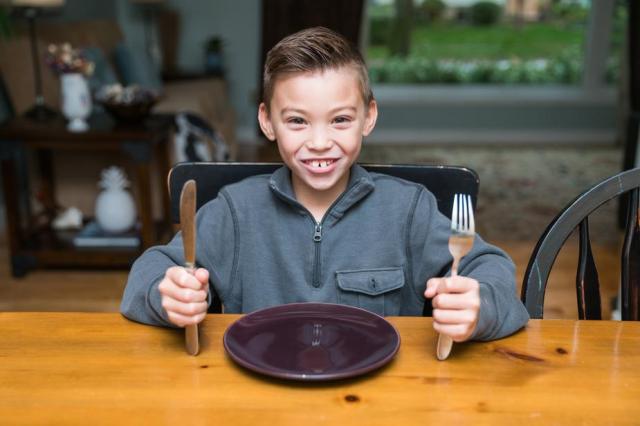If you want to know one of my most gratifying parenting moments, you’ll have to say please. I’m always delighted to learn from a friend or acquaintance that my child was polite without prompting.
There’s nothing like knowing that my daughter has shown gratitude to boost my confidence that she’s on her way to becoming a polite adult. I also recognize that the odds of another playdate invitation or carpool offer go up too!
When I teach manners class to children at my kids shop in Seattle, we start with the basics. Polite introductions with a firm handshake and eye contact are first on the list, then comes table manners, tips for engaging in relaxed conversation and finally how to write the ever important and sadly, disappearing thank you note.
Classroom or not, I’m sharing a few simple tips and tools that will leave a lasting impression on those who have the good fortune to interact with your children.
Table Stakes
The bare minimum to any manners tool kit is the standard please and thank you. Model this behavior early in every type of situation from family moments to visits to the grocery store.
Use body language including eye contact to show children how to easily and genuinely show their gratitude. When this becomes habit, the foundation has been set to teach the rest of those charming skills that will serve your children their whole lives.
The Eyes Have It
No evil eye here. Kids need to be comfortable making and holding eye contact with adults and children alike. Practice when you’re at the check-out counter or out to eat. Have children say thank you to the grocery store cashier while looking them in the eye.
Keep it Light
Etiquette is the practice of making others feel comfortable around you. The best way to teach and learn manners is to have fun practicing. If your kids are having trouble interacting with adults because of shyness or inexperience, practice at home until you’re laughing.
This physical practice and the laughter that goes with it, will help give kids the confidence they need and the muscle memory to take their manners outside the home and brighten the world.
The Standout
If you want to teach kids manners that will set them apart and get them invited back EVERY. SINGLE. TIME. Coach them to engage adults with ease. The unprompted compliment or question is a real game changer.
Picture the exchange. Your child has been invited to stay for dinner following an afternoon play date. The host’s family is gathered around the table and your little angel proclaims, “This mac and cheese is delicious! Thank you so much for inviting me to dinner.” Cue the open-mouthed care giver and the delighted smile that follows along with, “You’re very welcome! We’re so glad you’re here.”
Show your kids how much a sincere compliment can spread kindness and joy. One of my parenting practices involves complimenting my kids on unexpected things they say. If I notice them answering a sibling’s questions with patience, I tell them. My compliments are often met with a quiet moment, which I know from experience means they’re processing how my compliment makes them feel and reinforces the original act.
Reciprocate
In the manners classes that I teach to children, I love to show them how easy it is to get a fun conversation started by parroting. This is a great tool for kids as it’s simple and easy to use. When someone asks them a question, they politely answer and ask the same question back.
I coach kids to then think one step ahead and try to add a relevant detail to the conversation based on the original question. This makes it fun and easy for a child who considers himself shy to engage right away.
Put It In Writing
The final tool that every polite child should employ is through written gratitude. A child’s written thank you note has many benefits not least of which is penmanship practice. My easy formula for writing a thank you note starts with an address to the recipient.
Next, the first sentence opens with how the gift made the child feel, what a surprise it was to discover the thoughtful gift or how the child intends to use or enjoy the gift. The next sentence captures the child’s gratitude with a sincere thank you. My 1-2-3 thank you note formula then closes with a special hope or added connection to the gift.
For example:
Dear Grandma and Grandpa,
Happy new year! It was fun to see you over the holiday break and have a chance to play a lot of cribbage together. Thank you so much for the cribbage board you gave me. I can’t wait to see you again soon when I hope to break Grandpa’s winning streak.
Love, Your Grandson
This thoughtful note will go a long way to brighten Grandma and Grandpa’s day along with securing the next holiday gift!
I noted above that etiquette is the simple practice of making those around you feel comfortable and celebrated. With these tools, every child is empowered to make an impact in their community AND get invited back!
